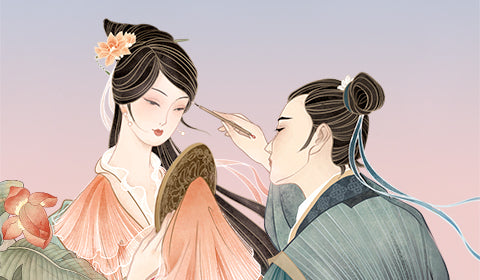
Qixi Festival, China’s Valentine’s Day, is here!
Every year, China celebrates a very special day of romance and tradition: on the seventh day of the seventh month of the lunar calendar, which in 2022 falls on August 4th, the country commemorates the magical time of Qixi festival.
A sort of equivalent to the western Valentine's Day, Qixi has been around for over 2000 years and is officially labeled as National Intangible Cultural Heritage, a truly potent mark of the day's importance in Chinese people's hearts and daily lives. The significance of Qixi festival originally derives from natural and ancient astrology, but with time, it came to honor the tale of The Cowherd and the Weaver Girl, a myth as old as the Han Dynasty (206 BC – 220 AD) that's still significant today.

While the parable has known many different iterations through the millennia, every version tells the story of a mortal cowherd and a goddess weaver girl who fell in love against all odds and despite being born in different worlds. Zhinü, the weaver girl who wove clouds in heaven, was one of seven goddess sisters who came down to Earth to explore it. They were bathing in a lake when they were spotted by Niulang, an orphan cowherd, and when the two fell in love at first sight, the weaver girl decided to stay in the mortal world to be with her lover. But she couldn't disregard her origins for very long, for the Jade Emperor of heaven discovered her transgression and returned her to her home, leaving both Zhinü and Niulang alone and heartbroken.
Then, one day, the cowherd's faithful ox offered to sacrifice himself to reunite the two lovers: if Niulang killed him, he could wear his hide and fly to heaven to see Zhinü again. But that, too, didn't last very long. The Goddess of Heaven (or Queen Mother of the West) drew a silver river in the sky and banished each lover to the opposite side of it, so they wouldn't be able to be together. Only once a year, on the seventh day of the seventh lunar month, a flock of magpies would join together to form a bridge over the silver river, making it possible for the cowherd and the weaver girl to meet in the middle and reunite. The silver river is believed to be, or symbolize, the Milky Way, which brings it back to the celestial and astronomical roots of the festival and means that the two lovers were living… on opposite sides of the galaxy!

The myth spanned a prolific and enchanting literary legacy throughout thousands of years, with poems, songs, and opera works being penned in its honor or telling its tale –after all, romance has always been a powerful source of inspiration, from Shakespeare to Qixi myths and everything in between. Traditional customs on occasion of Qixi festival included offerings of tea, wine, fruits, red dates, hazelnuts, peanuts, and melon seeds to worship the weaver girl, as well as women getting together to thread a needle under the moonlight and pray for a good husband and happy marriage.

While customs have changed, this charming and heartbreaking story still holds great power in the hearts of Chinese people today, who celebrate the most romantic day of the year by going out for dinner and exchanging gifts, or flowers and cards. This happens in symbolic observance of the tale of The Cowherd and the Weaver Girl and its main enduring lesson: that true love can, and will, always overcome any obstacles against all odds.





Leave a comment
This site is protected by hCaptcha and the hCaptcha Privacy Policy and Terms of Service apply.